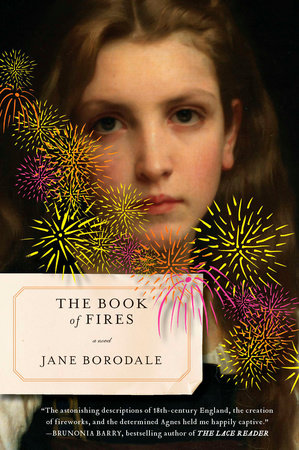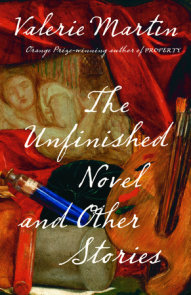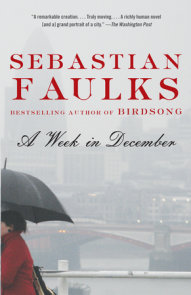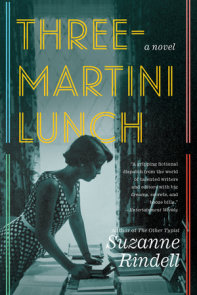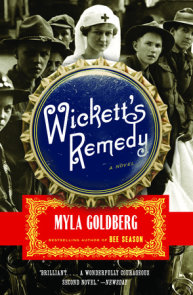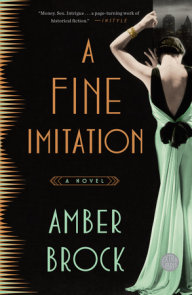READERS GUIDE
Questions and Topics for Discussion
INTRODUCTION
It is November 1752, and Agnes—the daughter of a poor laboring family living in the English countryside—is helping in preparations for their annual pig slaughter. While she works, Agnes muses, “I do what girls do: stir the pots, feed the hens, slap the wind from the babies, make soap, make threepence go further” (p. 4). Agnes is a skilled weaver gifted with both beauty and natural intelligence but knows she can expect little out of life beyond a repetition of her mother’s bleak existence—until an act of brutality causes her to leave everything she knows behind.
Two months earlier, Agnes had been accosted by John Glincy, a fellow villager and her would-be suitor. Agnes is unsure if she somehow invited the attack and tells no one—even after she realizes she is pregnant. Her mother is too preoccupied with her own many cares to notice the subtle changes in her daughter, but Agnes knows her condition cannot go undetected for long. When she unexpectedly stumbles upon a recently deceased neighbor (and her jar of gold coins) she knows she has found the means to spare her family from disgrace and set herself free.
In the lull following a local feast, Agnes slips away to catch the carrier to London. Her relief, however, is short-lived. She has escaped certain unhappiness only to expose herself to a host of unknown dangers, including the threat of the gallows, should her theft be discovered. Despite her attempts to keep a low profile, Agnes attracts the attentions of Lettice Talbot, an engaging and well-dressed fellow passenger.
At first, Agnes is grateful to be taken under the sophisticated young woman’s protection. But again, relief turns to despair when the two are separated in the London bustle and she loses the slip of paper bearing the name of her new friend’s lodging house. Terrified and alone as night begins to fall on the menacing streets of London, Agnes finds herself drawn to “a curious sign . . . a painted picture of a squat man covered in leaves holding a bright star” (p. 65).
The sign advertises the establishment of Mr. J. Blacklock, a brooding widower and maker of fireworks. Emboldened by fear, Agnes convinces him to give her work, and she becomes his assistant. The work is exacting but holds her in thrall. Her nimble fingers and eagerness to learn soon make her indispensable to Blacklock, and she settles into his peculiar household. While hiding the pregnancy as best she can, Agnes desperately schemes to save herself from ruin and find Lettice, who, it turns out, is not at all what she seems. But it is Blacklock’s own secrets that will change Agnes’s life forever.
Following the wondrous journey of one remarkable young woman’s coming-of-age in eighteenth-century England, The Book of Fires will captivate anyone who enjoys intelligent and meticulously researched historical fiction. Jane Borodale’s stunning literary debut is an evocative tale filled with mystery and brilliance.
ABOUT JANE BORODALE
Jane Borodale is an artist and writer. She is currently Leverhulme Artist in Residence at the Weald and Downland Open Air Museum in Sussex and lives in the West Country with her husband and two children. This is her first novel.
A CONVERSATION WITH JANE BORODALE
Q. You have a fine arts background, including a master’s degree in site-specific sculpture. Is there a relationship between your artwork and your writing?
I think I’m always trying to set up resonances between atmospheres or textures, whatever the method or medium. I’m interested in exploring the way that our emotional experience is at least partly shaped by the physicality and the sensual detail of the world we encounter. While at art school I began writing as a key component for my sculptural work. I’ve made sculptures or installations with peat, plant oil, gold leaf, lime, latex, printing ink, all in conjunction with short passages of narrative text or the spoken voice.
Q. Have fireworks ever played a role in your artwork?
No! But fire has, as a source of light and energy. Fire offers a metaphor for so much. And I’ve always been intrigued by chemistry, by the way that one substance can be transformed by being juxtaposed or combined with another, that near-alchemical potency of materials.
Q. You preface the book “with thoughts spared for all those condemned to death by hanging at Tyburn.” Were they your primary inspiration for Agnes’s story? Is she modeled on any historical figures or literary heroines?
I was appalled by the severity of punishment dealt in the eighteenth century for even very minor crimes, and as I wrote I found increasingly that I felt for the underdog, for those without property or opportunity against whom the odds were gravely stacked. I drew on real trials at the Old Bailey, the hangings of real individuals, for those described in Mrs. Blight’s pamphlets, and it felt very important to acknowledge their stories, which I called attention to not for the purposes of entertainment but as a stark reminder of how recently it was that society valued property above human life.
I am interested in archetypes, and in some ways Agnes’s plight is a familiar tale—women have always faced those adverse conditions. But her character came to me from the Sussex landscape that she grew up in. The distinctive qualities of the chalk downland—their uncompromising plainness of beauty and quiet strength—seemed to suggest how she might be, though I’m not sure that I was fully aware of it until I’d finished the first draft.
Q. Your novel has tremendous historical verisimilitude. Clearly, you’ve studied the era. What was the most interesting thing you uncovered in the course of your research?
I found the richness of the history of the development of pyrotechny utterly fascinating. For centuries fireworks had burned with what was essentially white fire, but early pyrotechnists constantly sought the means to produce a greater variety of flames and sparks, and colored fire. With a fuller understanding of chemistry gathering pace in the second half of the century (including the discovery of the volatile potassium chlorate in the 1780s, which finally made a range of colored fire possible), it must have been a thrilling, challenging time to be a pyrotechnist. So much of it is left to the imagination to conjure as few formulae were written down, but there are early-nineteenth-century works that build on this knowledge, and it was exciting to be able to look at printed pamphlets in the British Library—dog-eared working books with dirty thumbprints, their devisers all borrowed ideas and methods from each other, often at the expense of accuracy.
Q. Joe Thomazin is a literally mute but persistent presence throughout the novel. What is his role?
He is the silent watcher—a conscience embodied and the small wild spirit that remains as other or unknown until he breaks out into childishness near the end. He is there to highlight Agnes’s maternal instinct and to cast light on another outcome for unwanted children of the period. And as the close observer of all that occurs in the workshop, Joe Thomazin also holds the key to a deeper understanding of Blacklock’s skills and of his character, which will be a valuable asset to Agnes in the future.
Q. The relationship between Agnes and Blacklock is masterfully portrayed. Could you give us some insight into how you see Blacklock’s feelings for Agnes evolve over the course of the novel?
John Blacklock recognizes something in Agnes right from the start when she turns up on his doorstep. At first he believes that she reminds him of his dead wife, and then gradually he comes to see something of himself in her, not in a narcissistic way, but as a kindred spirit. Her sudden arrival and then her persistent, inquisitive nature jolts him out of his state of grief and kindles a need for progress inside him. Their developing relationship is articulated through the progress of their pyrotechny work while their mutual reserve and emotional clumsiness present a series of missed opportunities for their love to blossom.
Q. You eschew a traditional romantic ending for Agnes. Why? Do you believe that, in her time, at least, a single woman could attain greater success and happiness?
First I would say that I’m not always in favor of neatness at the end of stories— it can feel faintly untruthful and not enough like life. That was my primary motivation for the conclusion (or beginning) that I give to Agnes. And because a new love that is cut short can always remain perfect and untouchable in memory, perhaps it was more of a gift for Agnes that way. The inner, animal experience of love and its emotional costs or rewards presumably hasn’t changed so very much through the centuries. But practically speaking, and specifically in terms of fulfillment in business and enterprise, marriage in the eighteenth century had very different ramifications for women. Married and with husband alive the property of the wife became automatically his, or at least under his legal control. But widowhood crucially gave wives freedom—full and independent control over their own property and respect and status in society that they would never have had unwed. I was surprised to discover that there were women, particularly at the lower rungs of the middle classes, who had control of their own businesses, and not necessarily limited to those associated with female activity, such as dressmaking or laundry. I came across tantalizing mentions of women like Mary Clitherow, a firework maker in London, and Elizabeth Grief, a master gunflint maker in Suffolk, who took an apprentice. Here and there, women were already in occupations that might be thought of as traditionally male.
Q. Who are some of your literary influences?
Deep-seated literary influences probably come from what is read as a teenager, when the internal doors are wide open. Those are the books that settle in you, as a kind of silt that gets into your being, no matter how hard you might try to reject or deny them later. Key books for me were by Thomas Hardy and D. H. Lawrence for the spirit of place that they convey, Virginia Woolf for her internal human complexity, John Keats for his delight in the physical world combined with that melancholic sense of longing, Federico García Lorca for his rhythm and sense of the darkness of nature and of the spirit and his idea of duende. Also Alexander Pushkin, Geoffrey Hill, David Jones. Now, though, when I’m thinking of structure I look to the music of Bach. Visual artists whose work I respect would include Joseph Beuys, Rebecca Horn, Wolfgang Laib, and Anish Kapoor, who use the poetry of substances or matter to set up resonances or narrative patterns. Also writers who examine the overlap between the physical world and that of the imagination or the emotions, such as the phenomenologist Gaston Bachelard, or the concrete poets of the 1950s, through to Ian Hamilton Finlay, who placed words directly into the landscape itself. But possibly my greatest debt is to C. T. Onions, editor of the 1947 edition of the Shorter Oxford English Dictionary, which my husband bought me in a secondhand bookshop years ago, as scarcely a day goes by without my referring to it.
DISCUSSION QUESTIONS









